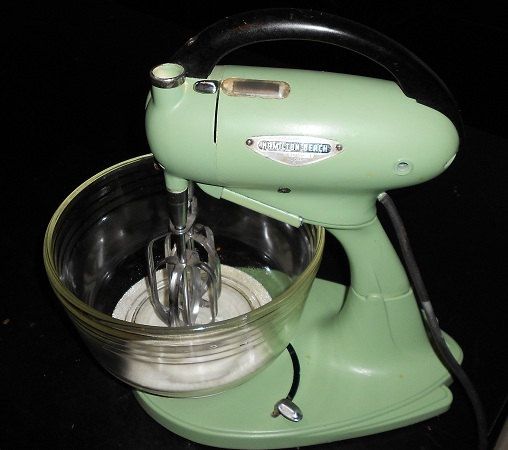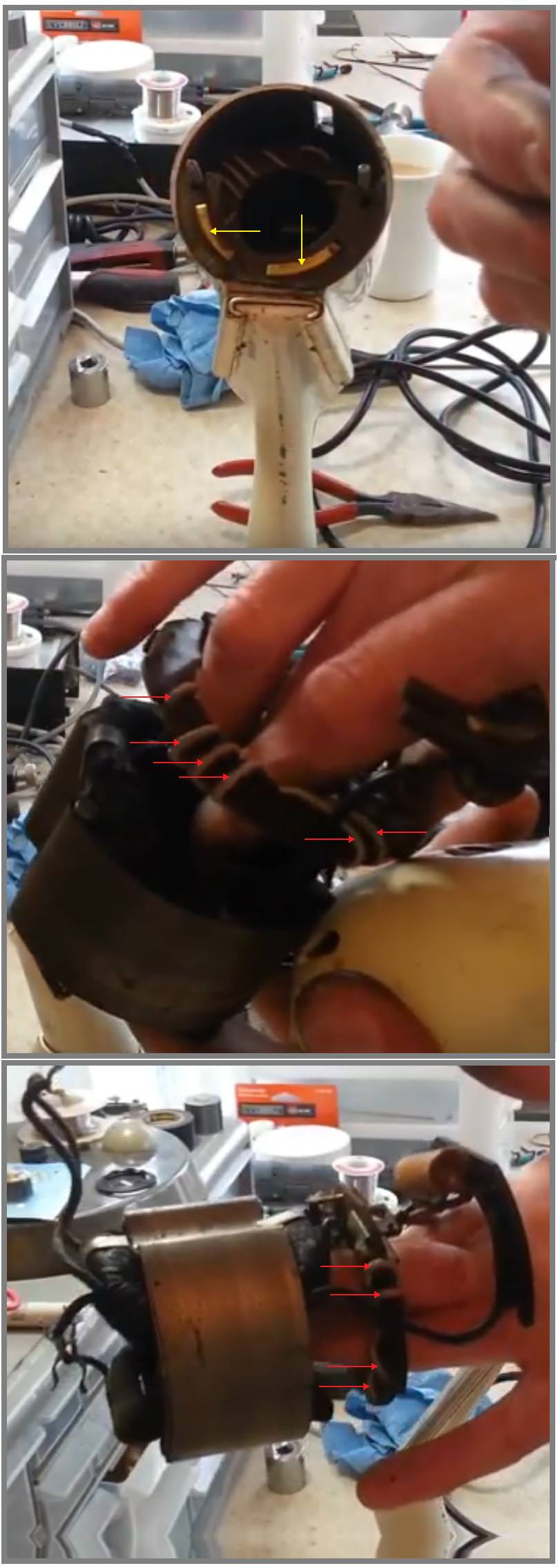Eyyyyyyyy Hombre . . . . . . ¿ Que Paaaaaaaaaaaaaaaaaasa ?
Considering that yo MaMa's Hamilton Meach Bixer . . .ooops Lys-dexia kickin' 'n again . . . . Beach Mixer was the G series, and I see NO reason from deviation from a PROVEN workhouse model for decades . . . .until they started toying with solid state innovations and their incorporations .
Ignoring of the smoke and mirrors, variable phase angle shift with a rotating brush holder, instead, fully expect to find that the speed shift tab ties into a rotary bakelite disc that moves its pressure contact to meet with the two contact tabs shown on the top photo.Then, there is the direct connection for full speed operation.
A common series AC/DC motor is run at full voltage for high speed or thru two series asbestos insulated nichrome wire resistors for the two slower speeds, as are engaged by the two contacts shown.
The given reference to the HAMILTON BEACH SODA MIXER model finds it using an inductor with two taps instead of the RESISTORS used in yours. The line AC passing thru the inductor's reactance at 60~ equates to series inductive reactance to drop the voltage just as your resistors did.
I still have and can use the hand version of this HB unit (Turqoise color) and it is made the same. I tore it down once for brush replacement . . . they had worn down so far that it stuttered on running speed.
Those units 24 segment rotors are certainly due a cleaning and repolishing to show all pristine fresh rosy copper surfacing again.
And if the end cap solder blob of the paper capacitor / to / foil surfacing by compression / touch proximity has loosened, and is open circuit now, a new generation of like value cap really is in order.
It supresses the back EMF sparking at each rotor segments end contact transition by absorption and the resultant decrease of metal erosion by sparking.
ILLUSTRATIONS . . . . . . . . . . .
- Speed contacts
- One nichrome wire resistor element
- Mate . . . . nichrome wire resistor element
Thaaaaaasit . . . . .. . .
.
73's de Edd
.....





